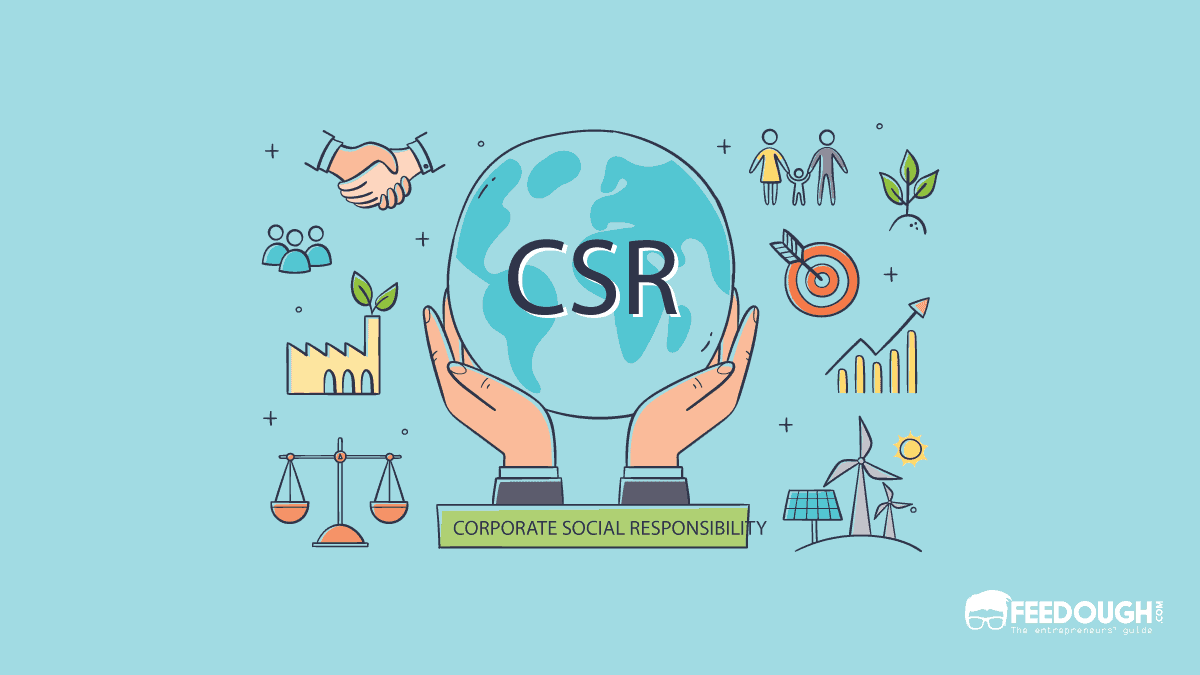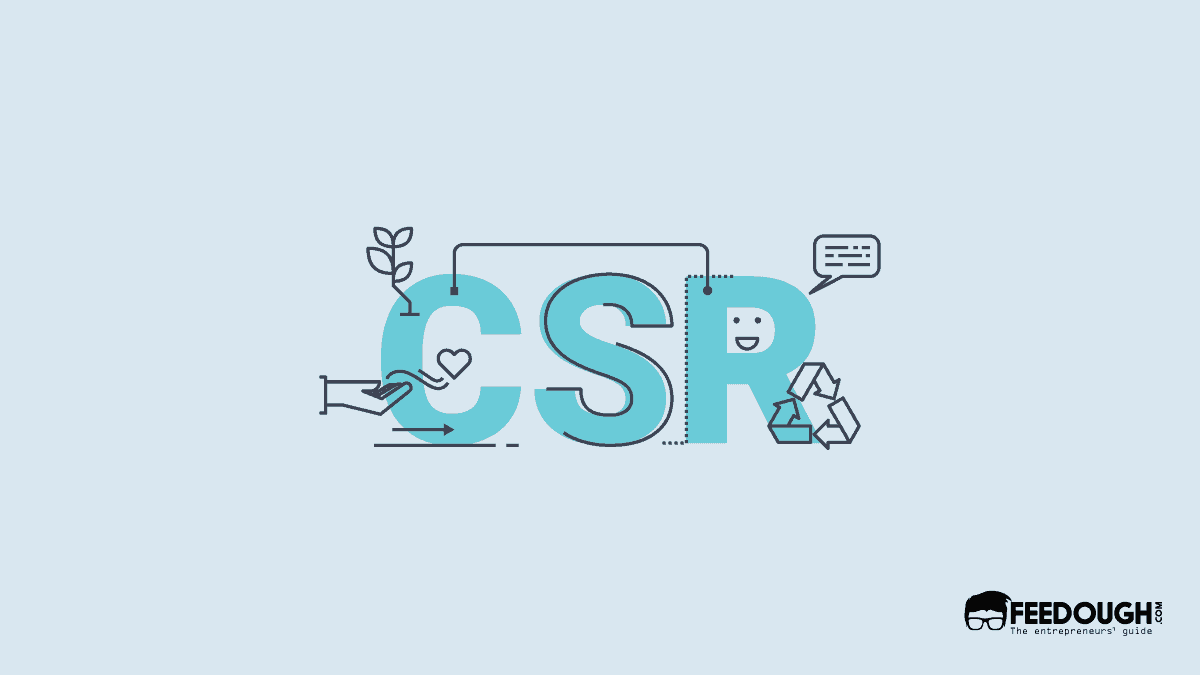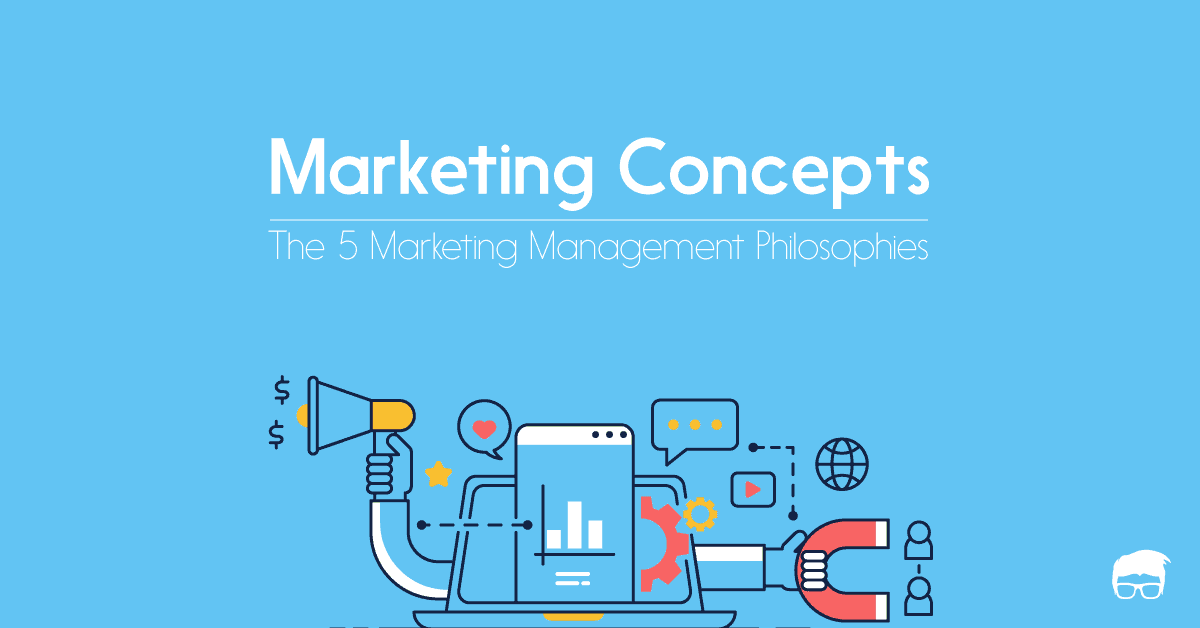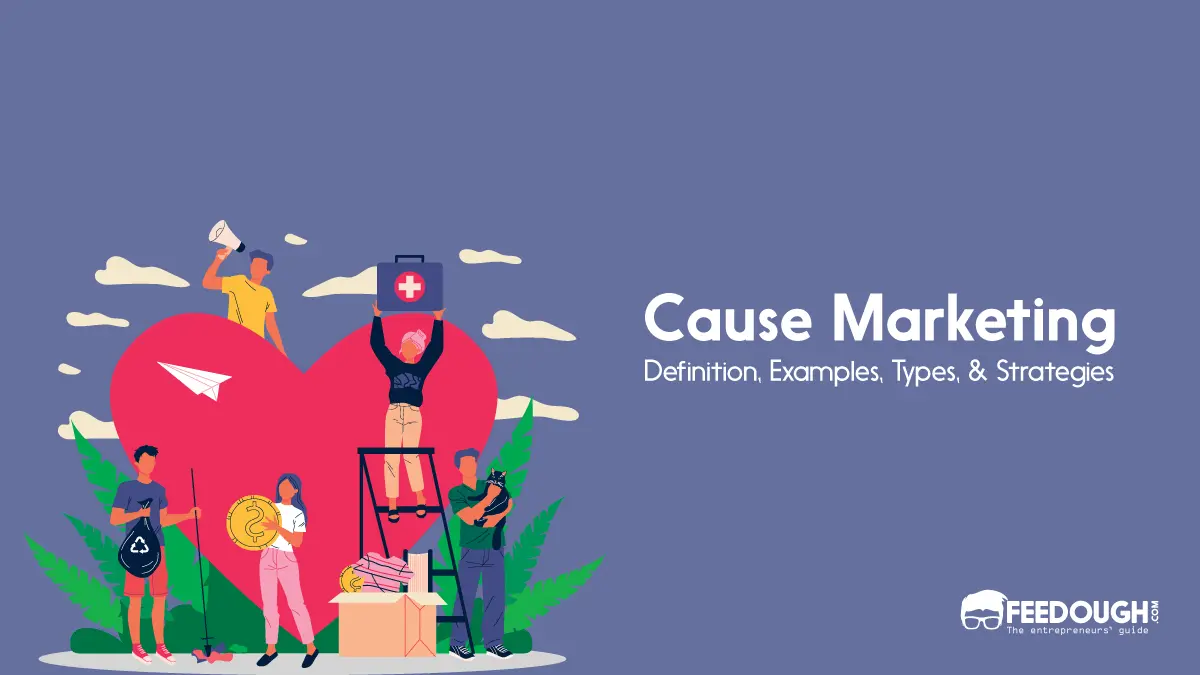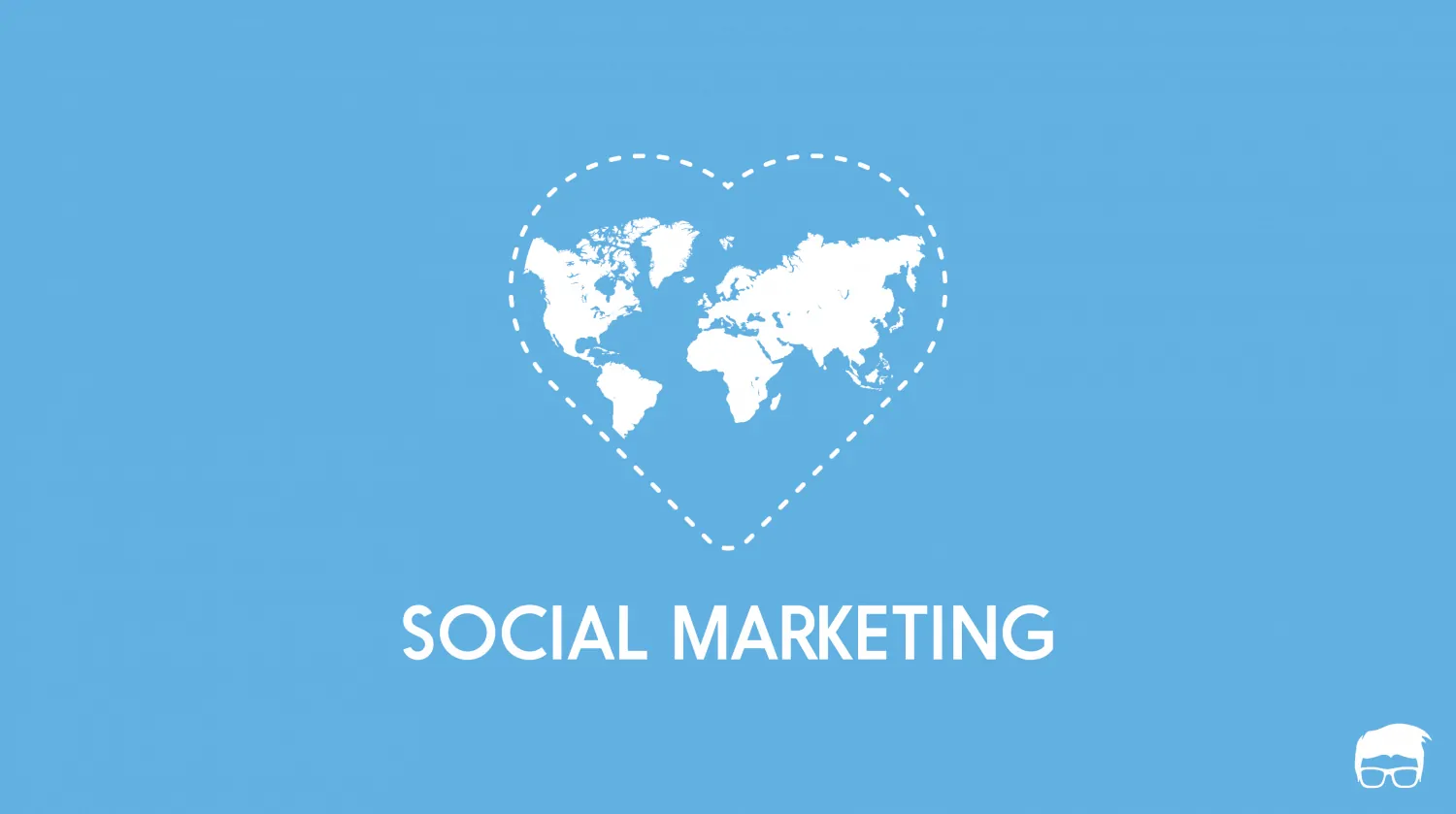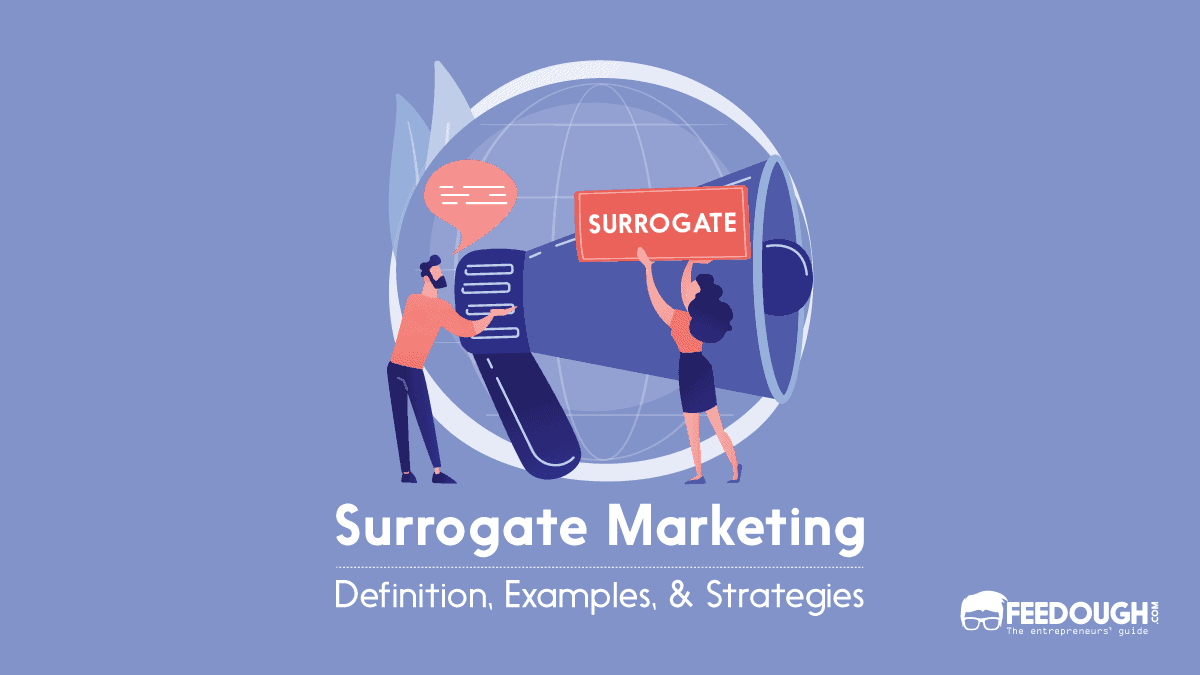In today’s corporate landscape, your commitment to social and environmental responsibility can significantly influence your brand image and market success.
Consumers increasingly align their spending with their values, seeking companies that produce quality products and services and contribute positively to society.
When people buy from companies that care about social issues, they feel they’re helping, too. The more socially responsible the company, the more supportive its community and consumers become.
Creating a business model centred on corporate social responsibility is an effective way to impact the world while still making a profit positively.
After examining various brands that use this strategy well, we have compiled some standout examples of corporate social responsibility. These companies manage to benefit society at large as a token of giving back.
What Is Corporate Social Responsibility (CSR)?
Corporate social responsibility (CSR) is a company’s commitment adopted by for-profit businesses that involves using company resources to benefit society and the environment in which it operates.
By practising corporate social responsibility, also known as corporate citizenship, businesses acknowledge their influence on various societal aspects, including the economy, social structures, and the environment.
In addition to large corporations embarking on ambitious CSR initiatives, smaller businesses and individuals can also significantly impact their communities.
Whether it’s organising local clean-up projects, food drives, or educational workshops, these efforts help build a stronger bond between businesses and residents. All they have to do is fill out a community service form to record and verify the completion of volunteer work or community service.
It ensures that all the goodwill they generate is recorded and can be shared with stakeholders to inspire continued collaborative efforts.
12 Corporate Social Responsibility Examples
Companies increasingly recognise the importance of CSR in building trust and loyalty with their stakeholders, including customers, employees, and the broader community. Here are 12 tangible examples of how companies are implementing CSR strategies.
Microsoft
Microsoft has structured its CSR around environmental sustainability, empowering communities through education and technology, and upholding the highest standards of corporate governance.
CSR Goals Of Microsoft
- Carbon Negative by 2030: Microsoft aims to be carbon negative, meaning it plans to remove more carbon from the environment than it emits.
- Zero waste by 2030: The goal involves achieving zero waste for direct operations, products, and packaging.
- Bridging the Digital Divide: Facilitating digital inclusion and providing digital skills training to underserved communities globally.
- Empowering Non-profits: Microsoft supports non-profits worldwide through technology grants and capacity-building initiatives.
CSR Initiatives Of Microsoft
Climate Innovation Fund

With the $1 billion Climate Innovation Committed over four years to funding, Microsoft looks to catalyse global investments in technologies that will reduce and remove carbon from the atmosphere.
This fund is not just about direct investments but is also about utilising further capital to accelerate the pace of carbon reduction and removal technology development.
This initiative reflects Microsoft’s ambitious goal to be carbon-negative by 2030 and, by 2050, to remove all the carbon the company has emitted since its founding in 1975.
AI for Earth

This program represents an important part of Microsoft’s approach to utilising its AI technologies for sustainable growth.
AI for Earth grants money, resources, and expertise to organisations working on challenges in four key areas: climate change, agriculture, biodiversity, and water.
Through this initiative, Microsoft supports projects such as precision farming, which increases crop yields and reduces waste, and biodiversity conservation projects that use AI to better understand and protect endangered species.
Digital Skills and Education

Recognising the growing need for digital literacy and technology skills in the contemporary job market, Microsoft launched a global campaign to bring more digital skills to 25 million people worldwide. This broad initiative includes several components:
- Free Access to Learning Paths and Content: Microsoft provides free access to learning content on LinkedIn Learning, Microsoft Learn, and the GitHub Learning Lab.
- Comprehensive Job Seeker Resources: The initiative combines Microsoft’s resources with LinkedIn’s vast employment network to provide detailed career-oriented information, learning paths aligned to jobs, and development tools at every stage of a job seeker’s journey.
- Grants and Partnerships: Partnering with non-profits, Microsoft expands its reach to communities and groups that might otherwise lack access to technology and training resources.
Social Engagement and Philanthropy

Through Microsoft Philanthropies, the company seeks to drive inclusive growth that benefits everyone on the planet. This is achieved through structured programs that enhance non-profit capabilities:
- Technology for Social Impact: Microsoft Philanthropies donates technologies (like Office 365, Microsoft Azure, and more) that non-profits usually could not afford, helping them scale their services and improve efficiency.
- Employee Matching Programs: Microsoft matches employee donations and volunteer time to non-profit organisations, thus maximising the impact of individual efforts.
- Disaster Response: Microsoft utilises its technology and partnership to respond more effectively to disasters, providing help in recovery efforts and rebuilding of key infrastructures through cloud and data services.
Coca Cola

As a globally recognised leader in the beverage industry, Coca-Cola is focused on reducing its environmental footprint, actively engaging in community projects through education and wellness programs, and ensuring that its business practices worldwide are transparent and ethical.
CSR Goals of Coca-Cola
- World Without Waste: Coca-Cola aims to collect and recycle the equivalent of every bottle that it can sell globally by 2030. This includes making 100% of its packaging recyclable and using at least 50% recycled material by 2025.
- Water Stewardship: The company aims to achieve water security across their value chain. This includes reducing the ratio of water used to that of beverages they produce and replenishing water to communities and nature, an equivalent amount to the water they use in their finished products.
- Climate Protection: Coca-Cola has committed to science-based goals to reduce the carbon footprint of its products. The aim is to significantly reduce their greenhouse gas emissions across the entire value chain by 2040, working toward a 1.5-degree Celsius pathway in alignment with the Paris Agreement.
- Sustainable Agriculture: Building on the success of its 5by20 initiative, which sought to empower 5 million women entrepreneurs by 2020, Coca-Cola is working towards a shared future that enables access to more equal opportunities, including continued support for women in agriculture.
- Healthier Beverage Options and Information: Coca-Cola is expanding its product portfolio to offer more beverages with reduced sugar or no sugar, and it is ensuring clear and accurate nutritional information on its packaging to help consumers make informed choices.
- Community Support: Coca-Cola actively invests in local communities through various programs aimed at economic development, community well-being, disaster relief, and education initiatives, adapting their efforts to the specific needs of each community around the globe.
Starbucks
Starbucks is a multinational coffee company and one of the world’s largest coffeehouse chains, with over 30,000 stores across 80 countries.
Over the years, Starbucks has grown into a global brand known for its commitment to ethical sourcing, environmental sustainability, and community engagement. Its chief sustainability officer leads the company’s CSR programs and cover a wide range of business aspects and employee relationships.

CSR Goals of Starbucks
- Resource Positivity: Aiming to store more carbon than the company emits, replenish more freshwater than it uses, and contribute more to the recovery of waste than it generates. Critical to this goal is the aspiration to cut the company’s carbon, water, and waste footprints in half by 2030.
- Sustainable Coffee Sourcing: Committing to sourcing 100% of their coffee ethically, which supports both the environment and the farmers engaged in coffee cultivation
CSR initiatives of Starbucks
- Circular Economy and Reducing Environmental Impact: Starbucks is introducing efforts to transition toward a circular economy, which is an economic system aimed at eliminating waste and the continual use of resources. This model promotes reusing, sharing, repairing, refurbishing, remanufacturing, and recycling to create a closed-loop system, minimising resource inputs and creating waste, pollution, and carbon emissions.
- Plant-Based Menu Options: As part of its commitment to reduce greenhouse gas emissions and water use, Starbucks is expanding its selection of plant-based foods and beverages. This initiative not only serves the growing consumer demand for vegan and vegetarian options but also aligns with environmental objectives, as plant-based diets are generally more sustainable than diets that include a high proportion of animal products.
- Reusable Packaging Innovations: Starbucks is exploring innovative approaches to encourage reusable packaging to minimise waste from single-use cups and packaging. Initiatives include offering discounts to customers who bring their own cups, testing out reusable cup programs in select locations, and developing more environmentally friendly disposable packaging solutions.
- Local Business Support: Through various programs, Starbucks aims to uplift local businesses, including coffee bean farmers and suppliers, by ensuring fair trade practices and sustainable sourcing.
- Disaster Relief Efforts: In times of crisis, Starbucks often steps forward to offer financial support, donations, and on-the-ground assistance to communities affected by natural disasters.
- Job Creation and Youth Opportunities: Recognising the challenges faced by younger and disadvantaged groups in securing meaningful employment, Starbucks has launched initiatives specifically aimed at job creation for these demographics. This includes hiring commitments, vocational training programs, and partnerships with local organisations to provide career opportunities.
- Promoting an Inclusive Workforce and Leadership: Starbucks strongly emphasises creating a diverse and inclusive environment for its employees, recognising that diversity strengthens the company culture and enhances its ability to innovate and connect with a wide range of customers.
- Inclusive Hiring Practices: Starbucks is committed to inclusive hiring practices that ensure opportunities for people of all backgrounds, including underrepresented minorities, veterans, and individuals with disabilities.
- Support for Diversity Within the Company: Beyond hiring, Starbucks fosters an inclusive culture through employee resource groups, diversity education programs, and initiatives designed to promote equity and inclusion at all company levels, from baristas to board members.
- Alignment with ESG Goals: These efforts underline Starbucks’ dedication to environmental, social, and governance (ESG) goals, specifically highlighting the company’s commitment to social equity through empowerment, opportunity, and community resilience.
Johnson & Johnson

Johnson & Johnson (J&J) is a globally recognised healthcare company that researches, develops, manufactures, and sells pharmaceutical products and medical devices.
The brand’s CSR philosophy is deeply rooted in its core values of quality, reliability, and trust. The company aims to use its extensive reach and resources to improve access to healthcare, create healthier communities, and ensure environmental sustainability. J&J’s CSR initiatives are guided by its Credo, which emphasises responsibilities to customers, employees, communities, and shareholders
CSR Goals of Johnson & Johnson
- Improving Global Health: Enhancing access to healthcare for underserved communities and driving initiatives that tackle health crises.
- Environmental Health: Reducing environmental impact through sustainable operations and product development practices.
- Women and Children’s Health: Focusing on the health and well-being of women and children, aiming to significantly reduce mortality rates in vulnerable populations.
- Employee Well-being: Prioritising its global workforce’s health, safety, and personal development.
- Global Disease Challenges: Addressing the world’s most pressing health issues, including HIV/AIDS, tuberculosis, and mental health, through research, partnerships, and education.
CSR Initiatives of Johnson & Johnson
Global Public Health Program

- Tackling Epidemics: J&J takes an active role in combating global health crises such as HIV/AIDS and Ebola through advanced research and providing access to medications in resource-poor settings.
- Strengthening Healthcare Systems: J&J works with local governments and NGOs to build strong healthcare infrastructures that can deliver sustainable care.
- Providing Education and Training: By investing in educational programs for healthcare workers, the company aims to leave a lasting impact on the health ecosystems of the communities it touches.
Earthwards® Approach

- The Earthwards® program represents J&J’s approach to product stewardship and is an integral part of its environmental CSR initiative:
- Life Cycle Analysis: From manufacturing to disposal, J&J analyses the environmental impact of its products across their entire lifecycle to identify areas for improvement.
- Sustainable Design and Innovation: Products are designed to reduce waste, use recyclable materials, and minimise energy consumption.
- Transparency and Reporting: J&J regularly communicates progress on environmental goals, signalling a commitment to accountability and continuous improvement.
Maternal and Child Health

In its mission to safeguard the well-being of mothers and children, J&J has developed targeted programs, such as:
- Training Skilled Birth Attendants: The company supports training programs for healthcare providers to improve outcomes for mothers and infants during childbirth.
- Enhancing Community Health: By implementing mobile health platforms, J&J helps disseminate critical health information directly to families, empowering them with knowledge about nutrition, hygiene, and disease prevention.
- Research and Development: Investing in R&D to create accessible medical interventions specifically designed to combat maternal and pediatric diseases prevalent in low-income regions.
Employee Health and Safety
- Comprehensive Healthcare Benefits: J&J offers a range of healthcare options to meet diverse employee needs, facilitating access to high-quality healthcare services.
- Mental Health Resources: Recognising the importance of mental health, J&J provides confidential counselling services, stress management programs, and supports a culture that encourages open dialogue about mental well-being.
- Safety Culture: Safety standards exceed regulatory requirements, and employees are empowered through training and resources to prioritise safety in the workplace.
Google, founded in 1998 by Larry Page and Sergey Brin, is a global technology company known for its search engine and a wide array of products and services, including Gmail, Google Maps, YouTube, and Android. The company operates under the mission to “organise the world’s information and make it universally accessible and useful.”
The company skillfully includes social efforts in its everyday business.
Its CSR approach covers many areas, using tech to tackle big issues like climate change and unequal education and making information more accessible.
CSR Goals of Google
- Sustainability and Environmental Stewardship: To significantly reduce carbon footprint and champion renewable energy.
- Digital Inclusion and Education: To enhance global access to information and improve digital literacy.
- Community Support and Development: To support local communities through funding, initiatives, and technology solutions that address societal challenges.
- Product Responsibility: To develop and maintain the highest safety and privacy standards for users across all products and services.
CSR initiatives of Google
Renewable Energy Projects

- Investment in Renewable Resources: Google invests heavily in solar and wind energy projects around the world. This not only powers their data centers and offices but also contributes to the overall increase in global renewable energy capacity.
- Advanced Energy Purchasing: Google uses sophisticated tools and forecasting models to purchase energy in ways that will increase the share of carbon-free sources in the grid.
- Innovative Carbon-Free Technologies: Exploring geothermal potentials and enhancing battery storage solutions, Google aims to make carbon-free energy more accessible and efficient.
The Grow with Google Initiative

- Access to Digital Education: Providing free courses, certifications, and educational tools that cater to various levels, from beginners to advanced tech professionals.
- Partnerships with Learning Institutions: Collaborating with colleges and universities to prepare students for tech careers with up-to-date curriculum and resources.
- Support for Small Businesses: Helping small businesses grow their digital presence, reach more customers, and operate more efficiently through workshops and tools.
Google.org

- Direct Funding: Grants to non-profits that are innovatively tackling issues in education, economic opportunity, and inclusion.
- Product Integration: Offering Google’s best-in-class products for free or at reduced costs to improve the technology capabilities of non-profits worldwide.
- Employee Engagement: Encouraging Google employees to volunteer their expertise in technology, data analysis and other areas to benefit global and local communities.
Impact and Measurement Expanded
- Renewable Energy Usage: Google tracks both the quantity of renewable energy used and its proportion relative to total energy consumption, aiming for clean energy round the clock.
- Philanthropic Impact: Beyond quantifying dollars spent, Google assesses the societal impact in terms of improvement in recipients’ quality of life, economic betterment, and educational advancement.
- Carbon Emissions Reduction: Detailed, real-time monitoring of carbon emissions helps Google identify trends and areas for improvement in its quest to reduce its carbon footprint.
LEGO
LEGO, the world-renowned toy manufacturer, stands out not only for its iconic interlocking bricks but also for its strong and innovative approach to Corporate Social Responsibility (CSR).
With a mission that goes beyond play, LEGO’s CSR initiatives are integral to its corporate identity, focusing on sustainability, education, and community engagement.
LEGO’s commitment to positive global impact through responsible business practices showcases how corporations can be powerful forces for good.
CSR Goals of LEGO
- Sustainability and Environmental Responsibility: To become 100% renewable in energy use and to transition to sustainable materials in all major products and packaging by 2030.
- Education and Learning Through Play: To inspire and develop the builders of tomorrow by investing in children’s education and making learning through play accessible to children worldwide.
- Community Engagement: Enhancing community well-being by supporting various local and global initiatives that align with its values.
- Public Good and Philanthropy: The LEGO Foundation supports projects and partnerships promoting innovative learning and development for needy children.
CSR initiatives of LEGO

Sustainable Materials
LEGO has committed to making all of its products from sustainable sources by 2030 as part of its ambition to have a positive environmental impact. This includes:
- Plant-Based Plastics: LEGO has introduced bricks made from sustainable, plant-based polyethylene derived from sugarcane. Although these pieces currently make up a small percentage of total production, their development marks important progress towards sustainability.
- Eco-Friendly Packaging: LEGO aims to make all of its packaging sustainable by 2025. This initiative has reduced the use of single-use plastics and increased the use of recyclable materials. The company also encourages consumers to recycle packaging and donates excess materials to educational programs.
- Circular Design: LEGO is exploring ideas to ensure that its products can be reused or recycled into new products, demonstrating responsibility in production and the full product lifecycle.
Renewable Energy Investments
- Wind Energy Investment: LEGO has invested in offshore wind farms, such as the Burbo Bank Extension wind farm off the coast of Liverpool, UK, making a tangible contribution to global renewable energy capacity.
- Carbon Reduction Tactics: LEGO’s factories, offices, and stores are designed or retrofitted to be energy-efficient, and the company is investigating additional ways to reduce the carbon footprint of its production processes.
Community and Emergency Response Programs:
- Local and Global Contributions: The LEGO Group and the LEGO Foundation provide support through various programs such as Build the Change and Rebuild The World campaigns, engaging communities in creative problem-solving and social development.
- Disaster Relief Efforts: LEGO contributes to disaster relief efforts by partnering with organisations like Save the Children and provides product donations to bring joy and support to affected children.
Netflix

Netflix, a global leader in streaming entertainment, has been at the forefront of incorporating Corporate Social Responsibility (CSR) into its foundational business model.
Renowned for its captivating storytelling, Netflix utilises its massive platform and resources to undertake CSR initiatives that are both impactful and inspiring.
CSR goals of Netflix
- Promotion of Diversity and Inclusion: Netflix is dedicated to crafting a diverse and inclusive workspace and ensuring that its content reflects the same values, mirroring the myriad nuances of society.
- Environmental Sustainability: Striving to minimise its carbon footprint, Netflix is committed to sustainable production practices and achieving net-zero greenhouse gas emissions.
- Educational and Social Impact: Through thought-provoking documentaries and partnerships with educational institutions, Netflix aims to enlighten and inspire action on critical global issues.
CSR Initiatives of Netflix
Environmental Sustainability
Netflix has strongly committed to environmental sustainability through its “Net Zero + Nature” plan.
The initiative outlines a comprehensive approach to reduce the company’s emissions in line with the Paris Agreement’s goal of limiting global warming to 1.5°C. By 2030, Netflix aims to reduce its Scope 1 and 2 emissions by 46%, as the Science-Based Targets Initiative Guidance advised.
Furthermore, since 2022, over 200 million households—more than 80% of Netflix members—have engaged with content that helps audiences understand climate issues or highlights sustainable solutions.
Social Inclusion and Diversity
Netflix is deeply invested in improving diversity and inclusion within its workforce and through the stories it chooses to tell. The company believes in the power of storytelling to build greater empathy and understanding among diverse communities.
To this end, Netflix is striving to make its content as diverse as the communities it serves, ensuring that people from various backgrounds see themselves reflected on screen.
Netflix’s Environmental, Social, and Governance (ESG) reports provide further insights into their strides toward becoming more inclusive and representative. The detailed updates show not only Netflix’s commitment to environmental sustainability but also its efforts to track and measure progress in other critical areas, including social inclusion.
Documentaries and Impactful Stories
One distinctive feature of Netflix’s CSR initiatives is its emphasis on using documentaries and other forms of storytelling to highlight social and environmental issues.
By curating over 200 series, films, and specials into a Netflix collection focused on sustainability, the streaming service is uniquely positioned to educate and inspire action among its global audience.
Nike
A titan in the sports apparel and footwear industry, Nike has long been recognised not just for its innovation in performance gear but also for its proactive stance on Corporate Social Responsibility (CSR).
Integrating sustainability and community empowerment into its core business strategies, Nike sets a high standard for CSR in the corporate world.
Nike’s CSR initiatives are built on environmental sustainability, diversity and inclusion, community support, and promoting physical and mental health.
CSR Goals of Nike
- Sustainable Innovation: To reduce its carbon footprint and promote sustainability through innovative product designs and sustainable materials.
- Diversity and Inclusion: To build a diverse, inclusive, and equitable environment both internally within the company and externally in the communities it serves.
- Active Communities: To inspire and support community engagement in physical activity, promoting health and wellness across the globe.
- Youth Empowerment: To empower the youth by providing access to sports and by utilising sports as a means to inspire positive change.
CSR initiatives by Nike
Climate Action

- Renewable Energy Transition: Nike is aggressively transitioning its facilities to 100% renewable energy. This includes not only its corporate offices but also owned or operated manufacturing facilities.
- Supply Chain Optimisation: Collaboration with suppliers to adopt sustainable practices, energy efficiency, and renewable energy, aiming to drastically cut emissions in the production process.
Circular Design

- Materials Innovation: Development of new materials that are both sustainable and reduce waste, such as Nike’s Flyleather and recycled polyester, which are designed to maintain performance while being environmentally responsible.
- Product Lifecycle Management: Implementing programs like the Reuse-A-Shoe program, where old shoes are recycled to create sports surfaces, and the Move to Zero apparel line that uses 100% recycled materials.
Nike Community Ambassadors Program
- Employee Engagement: Encouraging Nike employees worldwide to volunteer in their communities, offering training and resources to serve as coaches, mentors, and role models for kids.
- Access to Sport: Creating opportunities for physical activity through donations, building sports facilities, and organising sports events, making sports accessible to all children, regardless of their socio-economic background.
Amazon
Amazon isn’t just big in online shopping; it’s also really serious about its role in society and the environment.
Amazon’s comprehensive CSR initiatives are designed to address environmental sustainability, workforce diversity and inclusion, community support, and technological innovation that drives social good.
CSR Goals of Amazon
- Climate Pledge: Committing to net-zero carbon emissions by 2040 and operating on 100% renewable energy by 2030.
- Community Engagement: Improving educational and technological access in underserved communities globally.
- Sustainable Operations: Reducing the ecological footprint through innovative packaging, renewable energy, and circular economy principles.
- Diversity and Inclusion: Building a diverse, equitable, and inclusive work environment at all levels.
CSR Initiatives by Amazon
The Climate Pledge

Announced in 2019, The Climate Pledge is Amazon’s commitment to reaching net-zero carbon emissions by 2040, ten years ahead of the Paris Agreement.
- Renewable Energy Investments: One of the largest of such initiatives includes significant investment in solar and wind farms across the globe to power Amazon’s corporate offices, development centers, and AWS (Amazon Web Services) data centres.
- Electric Delivery Vehicles: Amazon has partnered with Rivian to develop an electric delivery vehicle. The company plans to have 10,000 of these vehicles operational by 2022 and 100,000 by 2030.
Amazon Smile

Amazon Smile is a simple way for customers to support their favourite charitable organisations at no additional cost every time they shop with Amazon. When customers shop on smile.amazon.com, the Smile Foundation donates 0.5% of the price of eligible purchases to the customer’s chosen charitable organisation.
- Customer Engagement: Empowering customers to contribute to society, which not only fosters a sense of community but also enhances customer loyalty.
- Support for Numerous Causes: Enabling a wide range of charities to benefit from Amazon’s vast customer base.
Diversity, Equity & Inclusion
- Affinity Groups: Amazon supports a network of over 12 affinity groups connecting thousands of employees across hundreds of global chapters. These groups bring employees together across businesses and geographies.
- Inclusive Hiring Practices: Ensuring diverse candidate slates and conducting inclusive culture training for employees and leaders.
BMW
Renowned globally for engineering premium vehicles, BMW shows a strong dedication to sustainability and improving society.
Its CSR efforts are carefully planned to reflect its commitment to a future that is both environmentally sustainable and beneficial for society.
CSR Goals of BMW
- Sustainable Mobility: Developing advanced technologies to lead the transition to electric vehicles.
- Environmental Conservation: Minimising the environmental impact across the entire lifecycle of their vehicles.
- Circular Economy: Championing the principles of reduce, reuse, and recycle in manufacturing.
- Social Responsibility: Fostering community upliftment and education in the areas they operate.
CSR Initiatives of BMW

Sustainable Drive
- Electrification of Fleet: BMW has pledged to offer 25 electrified models by 2023, with more than half being fully electric.
- Battery Technology and Recycling: Investment in research and development of efficient battery technology and responsible recycling systems ensures the company anticipates the entire lifecycle of its vehicles.
BMW Group Environmental Protection
- Emission Reduction in Production: Transforming production processes to be more energy-efficient and seeking renewable energy sources for manufacturing facilities to slash CO2 emissions.
- Resource Optimisation: Constantly innovating to optimise the use of materials and reduce waste through innovative design and the use of recycled and recyclable materials in vehicles.
Responsibility in the Supply Chain
- Supplier Training and Compliance: Implementing detailed guidelines for environmental standards and labour practices, and providing training to ensure suppliers align with BMW’s CSR policies.
- Sustainable Material Sourcing: Actively sourcing responsibly mined materials and seeking alternatives for scarce resources to promote sustainability within the supply chain.
Social Engagement and Education
- Educational Partnerships: Collaborating with educational institutions to provide scholarships and internships, focusing especially on STEM fields.
- Community Projects: Supporting initiatives that improve community infrastructure, provide access to clean water, and foster cultural projects, aligning with the belief that corporations can be catalysts for societal enhancement.
Tom’s of Maine
Tom’s of Maine is known for its natural personal care items. As a leader in the consumer goods field, the company is also recognised for its strong focus on Corporate Social Responsibility (CSR).
With a foundation built on caring for the environment, helping people, and being open about its work, Tom’s of Maine’s CSR activities show how a brand with a clear mission can positively impact society and the environment.
CSR Goals of Tom’s of Maine

- Environmental Responsibility: Exercise utmost responsibility in sourcing, packaging, and production to safeguard our planet.
- Community Engagement: Enrich communities by supporting access to water, education, and healthcare initiatives.
- Chemical Responsibility: Ensuring products are free from artificial colours, flavours, fragrances, and preservatives.
- Transparency: Maintain full disclosure about product ingredients, sourcing, and business practices.
CSR Initiatives of Tom’s Maine
Responsible Sourcing and Green Manufacturing

- Sustainable Ingredients: Focused on using naturally derived, responsibly sourced ingredients that are good for consumers and the earth.
- Zero Waste Manufacturer: Aiming to achieve zero waste in manufacturing, Tom’s recycles, repurposes, or composts all waste from product production.
Flourishing Communities
- 10% for Good: 10% of Tom’s profits are dedicated to charitable causes, reinforcing their connection to communal improvement.
- Employee Volunteerism: Employees are encouraged to spend 5% of their paid work time volunteering, fostering a company culture deeply connected to social service.
Authentic Product Stewardship
- Natural Personal Care: Committing to products that are not only effective but safe for use, with clear labelling of ingredients to foster consumer trust.
- Health and Wholeness: Continual pursuit of innovative natural ingredients and formulas to promote health without compromise to quality or efficacy.
Enduring Transparency
- Ingredient Transparency: Unveiling the source and purpose of every ingredient used in their products.
- Sustainability Reports: Offering regular and thorough sustainability reports to the public, detailing progress, challenges, and goals.
Levi

Levi Strauss & Co., the iconic denim brand, has consistently demonstrated a strong commitment to Corporate Social Responsibility (CSR) that goes beyond the fashion industry’s traditional boundaries.
CSR Goals of Levi Strauss & Co.
- Sustainable Production: Minimise environmental impact throughout the lifecycle of their products.
- Community Involvement: Engage with and support the communities in which they operate.
- Employee Well-being: Provide a safe, inclusive and ethical working environment for all employees.
- Product Sustainability: Increase the use of sustainable materials in their products.
CSR initiatives of Levi
Benchmarking Sustainability in Production
Levi’s acknowledges the high environmental cost of clothing production and has implemented measures to reduce its impact.
Their water <Less™ initiative has proved pivotal in reducing the amount of water needed to produce their products. This method includes using up to 96% less water to finish garments, and it has revolutionised industry practices.
Circular Economy Approach
Aiming for zero Waste, Levi’s has introduced programs that allow customers to recycle their worn-out jeans.
Levi’s has also been working on making it easier to repair, recycle and repurpose their products to extend the jeans’ life and reduce waste.
Empowerment and Equity
Levi’s strong advocacy for social justice is seen in its efforts to create a diverse and inclusive workplace.
The Levi Strauss Foundation has also been instrumental in fighting stigma and discrimination in its communities, encouraging programs addressing social issues like HIV/AIDS prevention and advancing women’s rights.
Employee Engagement and Safety
Safety and equity play crucial roles in Levi’s CSR strategy, as the company has shown a consistent commitment to the health and safety of its employees.
Their Worker Well-being initiative focuses on programs that improve the lives of the people across the company’s supply chain.
Introducing Sustainable Materials
Innovating within their product lines, Levi’s has committed to using more sustainable and less resource-intensive materials.
The Cottonized Hemp clothing line reflects this, using hemp that requires less water and fewer chemicals than conventional cotton, processed in a way that feels just as soft as the cotton you’re used to.
Wordsmith. Caffeine enthusiast. A full-time business-oriented writer with a knack for turning the ordinary into extraordinary. When not working, you can find Ishan listening to music, reading or playing with doggos.
